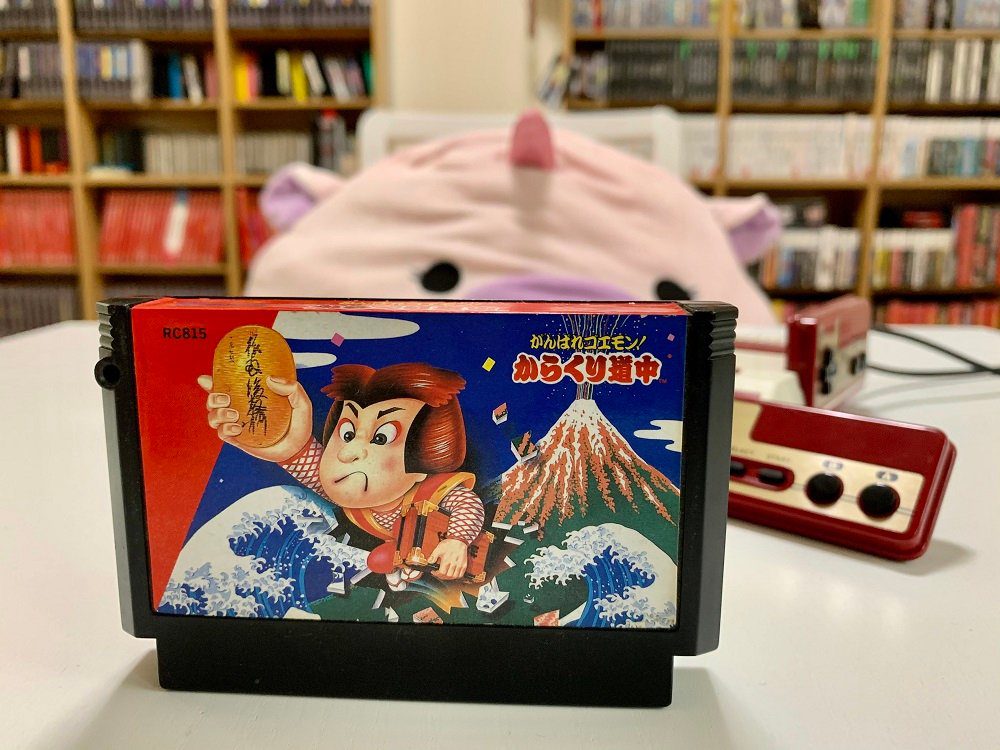Let’s munch on some onigiri this Famicom Friday
One of the fears that big decision-makers had in the ‘80s and ‘90s when it came to localizing games was whether or not it would appeal to Western audiences. We hadn’t been indoctrinated with enough anime and Pocky yet, so ideas like tatami floors and bowls of rice were thought of as alien and terrifying to Westerners.
If we did get one of these too-Japanese-for-market games, typically, changes would be made. For example, Ganbare Goemon: Yukihime Kyuushutsu Emaki, which was localized as Legend of the Mystical Ninja in the West, replaced onigiri with pizza to prevent confusion. After all, we universally understand that pizza makes you healthier, but what even is an onigiri? A ball of rice? Rice goes in a burrito and that’s it.
The other alternative was to just not localize it, and because this option was often the one taken, we missed out on entire series of games. We luckily got a few of the Ganbare Goemon games in North America, but the lion’s share skipped our shores. Not least of which were the Famicom titles.

Ganbare Goemon: Karakuri Douchuu
Published By: Konami
Developed By: Konami
Released: July 1986
Also Available On: MSX2, Game Boy Advance, Mobile, Wii, 3DS, Wii U
Konami’s recent fall from grace has been heartbreaking to watch. As they gradually sputter out games of sometimes questionable quality, it’s hard not to mourn the treasure trove of properties they’re just sitting on. Goemon has been missing since 2005 unless you count the Pachislot titles, which you should only do if you want to see me cry.
Over here in North America, we got a small, disconnected scattershot of titles in the series, but in Japan, it was a major franchise with a plethora of games spread over nearly two decades. Starting as a simple arcade game called Mr. Goemon, the series would expand to many different platforms before being relegated to the pachinko parlors, where Konami seems to send the corpses of all its licenses so they may be displayed like your taxidermied pet dog.
The series would come home for the first time with the Famicom’s Ganbare Goemon: Karakuri Douchuu. Released in 1986, what started as a port of Mr. Goemon mutated heavily into something that more closely resembles a cross between The Legend of Zelda and a beat ‘em up.

The point of each level is to gather three gate passes. These are typically bought from stores, hidden in mazes, and buried in holes that you uncover by jumping over them. The holes are pretty key since they provide shortcuts, and two of them hide passes in each level. There’s no sure way to tell where a hole is hidden, so get used to bunny hopping everywhere since that’s the only way to uncover them.
The game’s charm comes from its somewhat wacky approach to Japanese history. The title character is based on the mythical noble thief, Ishikawa Goemon, but as the series progressed, it became weirder and weirder. The original Ganbare Goemon was relatively grounded but still rather cartoonish. It was laying the groundwork for some truly bizarre things, but we’re not there yet.
Although it’s impossible to pin the series to a single formula, Ganbare Goemon establishes the one that most games would return to. Visiting shops, stopping to talk to residents, taking part in distracting mini-games; that all started here. It lacks some of the features that would become staple in later games of the series (like simultaneous multi-player), but it did more to establish the franchise than Mr. Goemon did before it.

The game is thirteen levels long, and it takes a reasonably significant amount of time to get through them all. There’s no password or level skip, so you have to do it in one sitting, which can be quite a feat. However, the game then pulls the “okay, now beat it again, but harder” strategy. That would be bad enough, but the game actually loops 8 times before it’s finally completely complete. If you can topple all 8 prefectures, that’s pretty hardcore.
It can be difficult to play through Ganbare Goemon without knowing the local language, though it’s still possible. You will, however, have to make guesses as to the function of each building, as well as miss out on the flavor text spat at you by the game’s denizens. Fortunately, there is a fan translation floating around if you’re curious, and it’s recommended if you can’t read the language.

As one of Konami’s more landmark titles, Ganbare Goemon: Karakuri Douchuu has been released multiple times. A modified port would first land on the MSX2 home computer, adding a few things and changing out the smooth horizontal scrolling for flip-screens. The Famicom version would be ported multiple times, starting with a Famicom Mini release on the Game Boy Advance. It would also land on the Wii, Wii U, and 3DS Virtual Consoles. There was even a port available for mobile phones in 2005.
However, it never found its way to be localized. I still hold out hope that we’ll get a Ganbare Goemon collection in some form one day, but this is Konami we’re talking about, and I’m still reeling that we got the Castlevania and Gradius collections.








